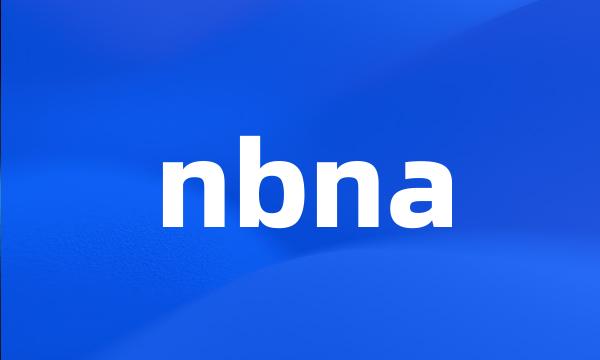nbna
- 网络新生儿行为神经测定;神经行为评分;行为神经测定;新生儿神经行为测评;新生儿神经行为评估
 nbna
nbna-
NBNA evaluate clinical curative effect of compound salvia miltiorrhiza injection
行为神经测定评价复方丹参注射液临床疗效
-
Clinical Study of Prognostic Evaluation by NBNA Count Methods in Anoxia Newborn During Earlier Period
NBNA加分法对新生儿窒息预后早期评估的临床研究
-
NBNA score have the great value for the prognosis of children with HIE .
NBNA评分对HIE患儿的预后预测有很大价值。
-
Results : NBNA total points and behavior ability in observation group were higher than those in control group ( P < 0.01 ) .
结果新生儿生后第28天的比较中,NBNA总分及行为能力和主动能力2个项目群得分观察组高于对照组,有显著性差异(P<0.01)。
-
Method 168 cases of newborn was monitored continuously by Newborn behavior never assay ( NBNA ) method and compared with control group .
方法运用新生儿行为神经测定(NBNA)方法对在本院出生的168例足月新生儿进行连续监测,并设对照组与实验组进行比较。
-
NBNA scoring average 37.75 ± 1.39 , 221 cases more than 36 points , passing rate was 95.7 % .
NBNA得分平均水平37.75±1.39,合格者(大于36分)221例,合格率95.7%。
-
The brain response in preterm infant was correlated with NBNA at corrected age of 40 weeks .
围产期脑损伤可影响脑的反应性,早产儿脑反应性与纠正胎龄40周时的神经行为评分及神经发育相关。
-
Conclusions Determination of cerebral CT value and assessment of NBNA are helpful to the estimation of the state of HIE .
结论测定脑CT值及进行NBNA评分有助于HIE病情评估。
-
Results According to clinical classification , the cerebral CT values and NBNA scores were significantly different between group slight grade HIE and group medium grade .
结果按临床分度,HIE轻、中度组CT值及NBNA评分差异有显著性;
-
Both groups were given NBNA examination before and after treatment ( mean interval was 12 days ), also given DDST examination for follow-up .
两组治疗前后行NBNA检查(平均间隔12d),并用丹佛发育筛查法进行随访。
-
Changes in jaundice index within 5 days were measured and about behavior nerve growth between and after intervention assessed by using the NBNA grades .
测量三组干预5d内黄疸指数及行为神经发育情况。
-
Aim : To study the effect of touch on neonatal behavioral neurological assessment ( NBNA ) scores and the intake of milk .
目的:探讨抚触对窒息复苏术后新生儿行为神经评分和摄乳量的影响。
-
Conclusion : NBNA has some feasibility in hearing screening of the neonates , but which should be improved and perfected .
结论:NBNA用于听力筛查有一定的实用性,但运用NBNA听行为能力评分进行新生儿听力筛查还需进一步改进和完善。
-
The level of plasma CO was positively correlated with clinical degree of HIE and degree of CT , but negatively correlated with NBNA .
血浆CO浓度分别与HIE临床分度、CT分度呈正相关,与NBNA评分呈负相关;
-
To compare NBNA score at 7th days after birth , there was still significantly different between mild group with the moderate group ( P0.05 ) .
生后第七天,轻度与中度HIE患儿NBNA评分没有明显差异(P0.05)。
-
More neonates in the Treatment group had normal scores of NBNA than the Control group at 7 and at 12-14 days of life ( P < 0.05 ) .
治疗组生后7天及12~14天NBNA评分正常的例数多于对照组,其差异有显著性(P<0.05);
-
Methods The NBNA assessment and regular follow-up for 842 cases of high-risk newborns , the brain development assessment with 52 items nerve function and infants Intelligence Scale .
方法对842例高危新生儿进行NBNA评估及一年的定期随访,用52项神经运动及婴幼儿智力量表进行发育评价,选择同期出生的正常足月新生儿进行NBNA评分及跟踪随访对照。
-
Changes of clinical symptoms and signs of all infants were observed , and the neonatal behavioral neurological assessment ( NBNA ) scores were evaluated .
观察3组患儿临床症状体征变化,同时进行新生儿神经行为(NBNA)评分。
-
NBNA score for HIE children at the same time were evaluated , to determine the function of the nervous system and the estimated prognosis . Results : 1 .
HIE患儿于采血的同时进行NBNA评分,记录评分结果并判断神经系统功能及其估计预后情况。
-
Results Grades of the NBNA in the neonates with intrauterine hypoxia are lower than that of control group especially in behavioral function and initiative muscular tension .
结果有宫内缺氧史的新生儿其神经行为评分明显低于对照组,主要减分项目为行为能力和主动肌张力。
-
Using Chinese 20 terms NBNA method , all patients were tested once before treatment and after 1 course treatment ( full mark : 40 points , less than 35 : abnormal ) .
采用中国新生儿20项行为神经评分法,对所有患儿分别于治疗前、治疗1个疗程后各测定1次行为神经评分(满分为40分,<35分为异常)。
-
Objective : To judge prognosis of newborns suffered from hypoxia ischemia encephalopathy ( HIE ) by clinical grading , NBNA and brain CT scanning .
目的:通过临床分度,新生儿行为测定,脑部CT检查对新生儿缺氧缺血脑病(HIE)进行临床评估,判断预后,以便早期进行干预治疗。
-
Methods : Ninety six cases of HIE were graded by 20 items of NBNA , which was compared with the clinical and coronal CT manifestations .
方法:对96例HIE患儿进行动态20项NBNA评分,并与临床分度、头颅CT分度比较。
-
Objective : To explore the significance of neonatal behavioral neurological assessment ( NBNA ) in severe neonatal asphyxia treated by hyperbaric oxygen ( HBO ) .
目的:为了探讨新生儿神经行为测定(NBNA)在评价高压氧治疗新生儿重度窒息中的意义。
-
Methods Neonatal behavioral neurological assessment ( NBNA ) and brainstem auditory evoked potential ( BAEP ) were measured in 38 neonates with hyperbilirubinemia .
方法对38例高胆患儿分别进行新生儿神经行为评分(NBNA)和脑干听觉诱发电位(BAEP)检测。
-
At the 14th day after birth , 20-item neonatal behavioral neurological assessment ( NBNA ) was taken for each asphyxiated infant .
窒息组14日龄时进行新生儿20项行为神经测定(NBNA)。
-
Methods : NBNA and transiently evoked otoacoustic emission ( TEOAE ) in the 1 167 newborns aged 2 ~ 7 days were compared .
方法:新生儿出生后2~7d分别进行新生儿行为神经测定和瞬态声耳声发射检查,将两项结果进行比较。结果:①NBNA听行为能力评分与TEOAE通过率呈正相关关系;
-
On the 5th day after caresses touches , NBNA grades in groups B and C were higher than in group A obviously ( all P < 0.01 ) .
干预第5天B、C组新生儿行为神经评分显著高于A组(均P<0·01),且C组显著高于B组(P<0·05)。
-
Thirty normal newborns were used as the control group . Neonatal behavioral neurological assessment ( NBNA ) was performed on HIE neonates at the acute and convalescence stages .
HIE组新生儿分别在急性期和恢复期做新生儿神经行为测定(NBNA),分析血清IGF-Ⅰ和GH与HIE严重程度及与NBNA之间的关系。
-
Objective To determinate the neonatal behavior neurological assessment ( NBNA ) of newborns with fetal distress and to research the relationship between fetal distress and neonatal neurological behavior .
目的:测定宫内窘迫的新生儿神经行为,以探讨宫内窘迫与新生儿神经行为表现、预后的关系。
